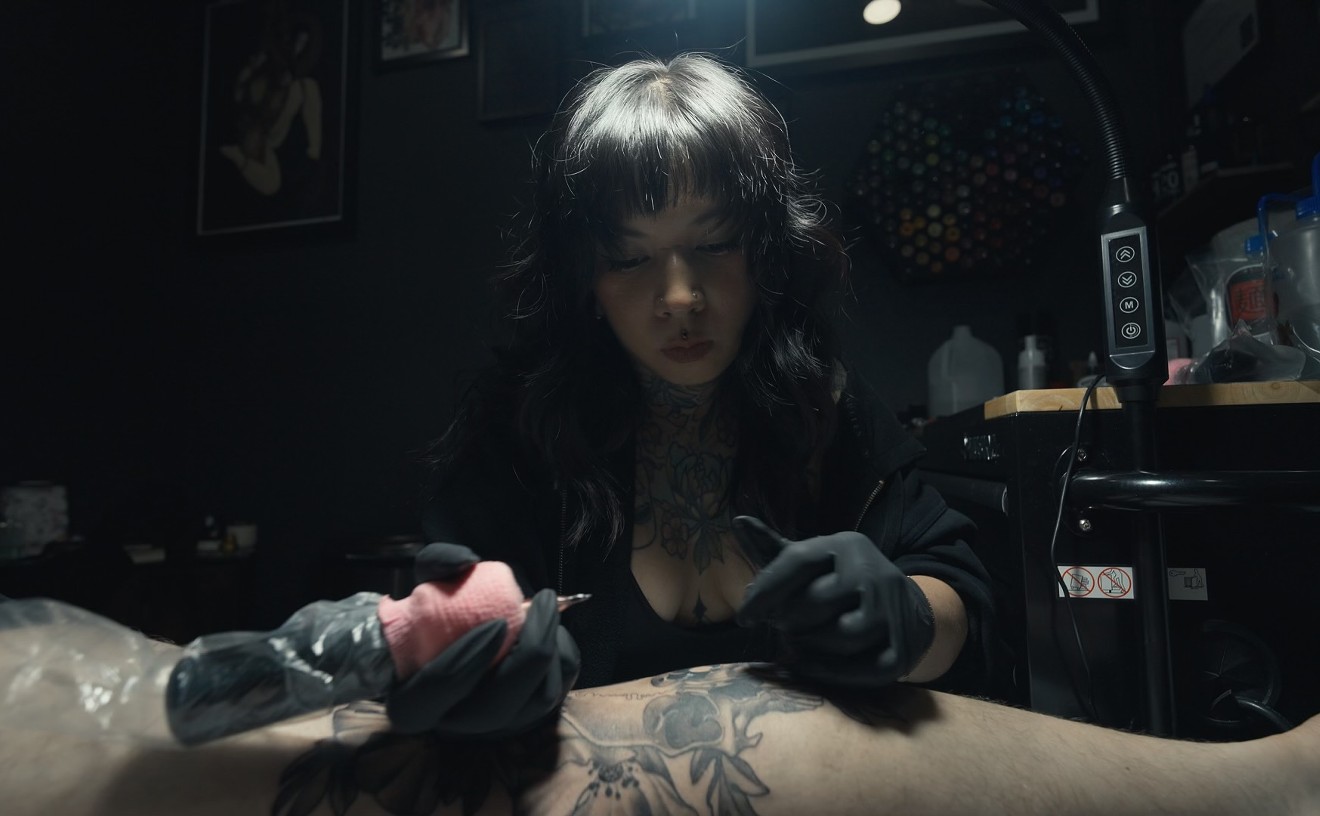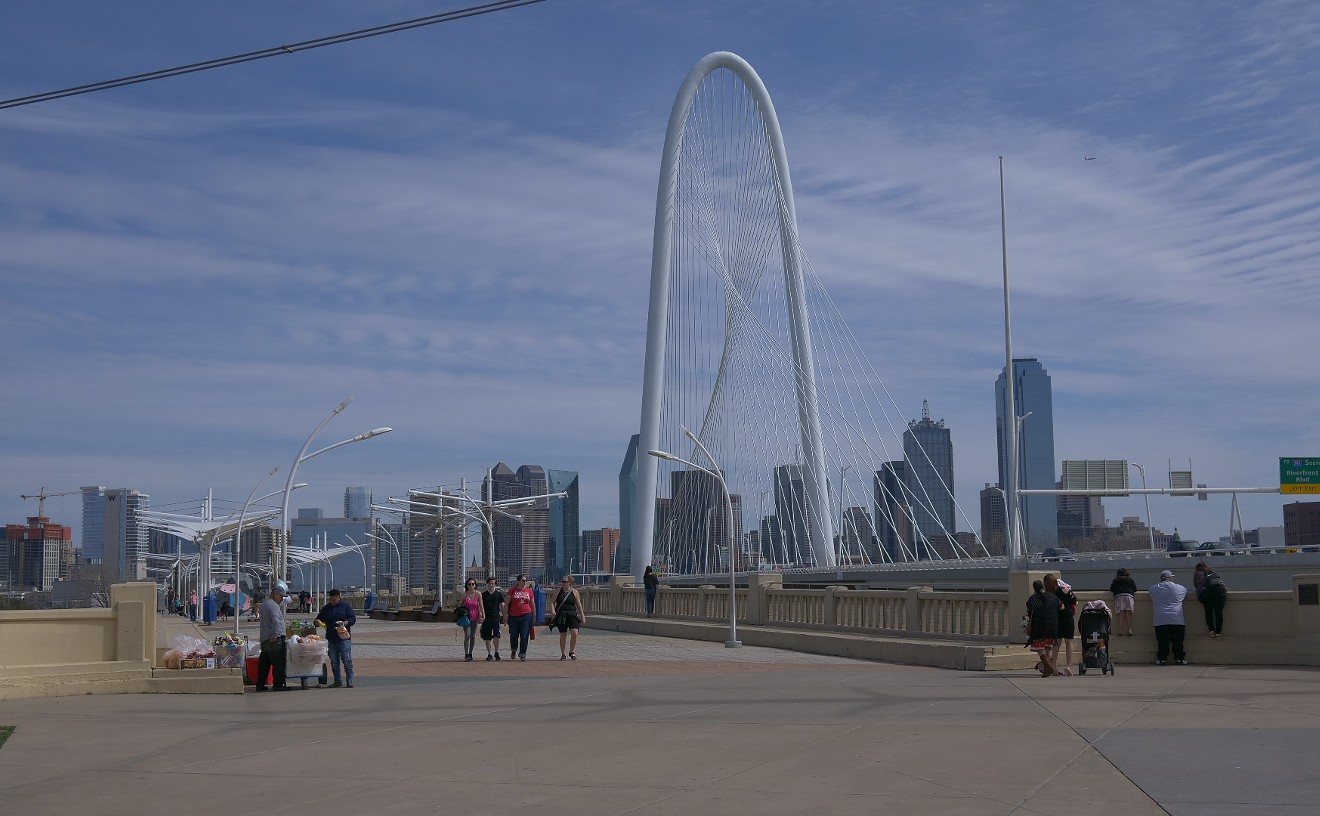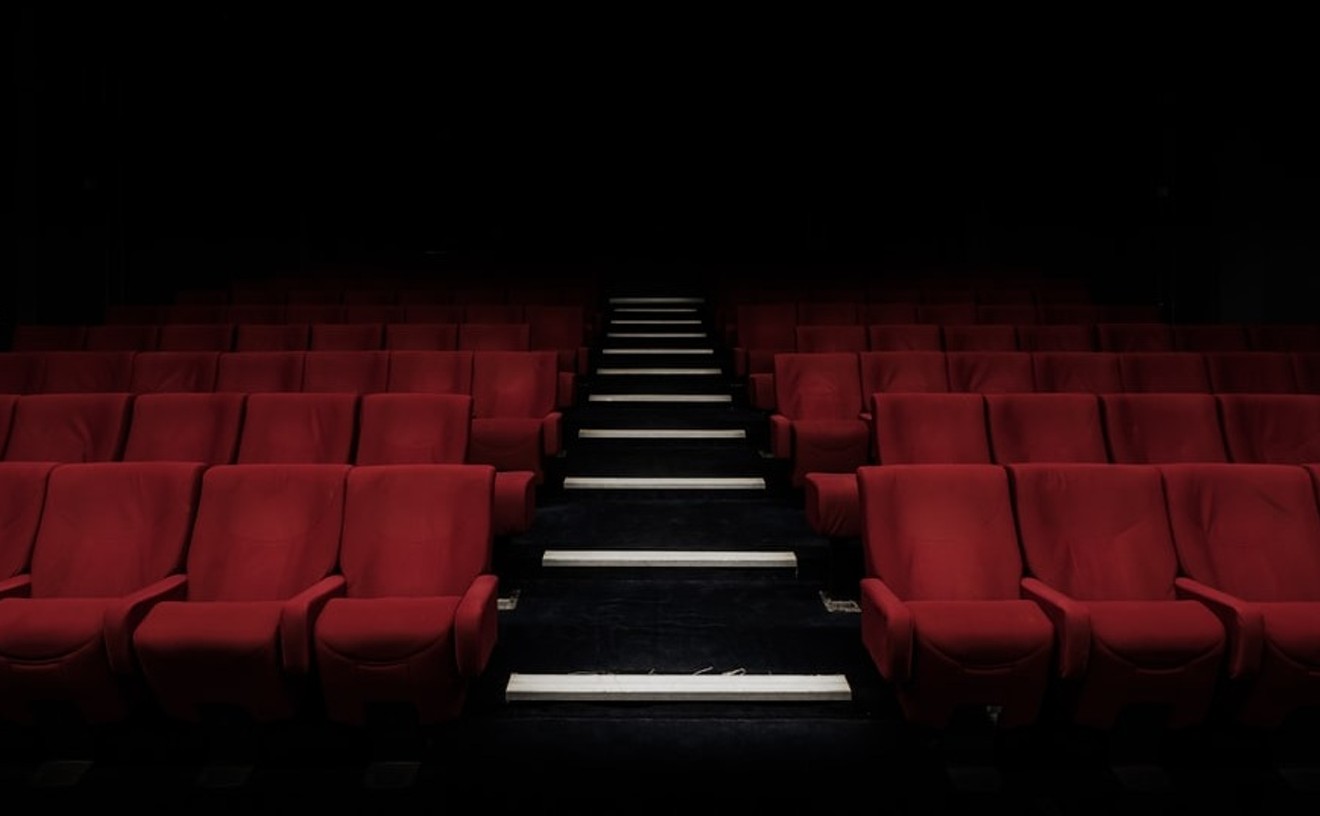I've not always been good at museums. Raised by a mother who understood the value of sticking her kids into artistic experiences in a family who liked to travel, I was more often the daughter piddling around the museum shop with my Dad, looking for a good souvenir to show off to my friends at home. I was the pre-teen who yawned her way through the Tate after Dad quickly shut me down from sneaking into the room filled with Rated R video art. And though I've developed an obsession with art as an adult, last week during a trip to NYC, I still identified with the teenagers walking into Modern Museum of Art's contemporary painting show, The Forever Now, when they rolled their eyes at the stick figure painting that welcomes visitors to the show. "A stick figure in a museum? Isn't that creative?" were the exact words I overheard. I sent them empathetic eyes from my perch in front of the placard.
There's nothing impressive about Joe Bradley's "Man Made Dirigible" -- a huge canvas with a horizontal stick man stroked in grease pencil. But that's sort of the point, The stick figure was accompanied by three other pieces from his Schmagoo paintings, which engage symbolically with super hero stories, heroin and the grime you pick up from just living your life. The canvases are dirty from Bradley walking on them; the final product is meant to be droll. And his interest in pictographs engages with the history of artists like Jackson Pollock and Adolph Gottlieb. You could learn almost all of this on the placard. But the teenagers didn't care; they snickered their way to the next work.
It was during this show that I was struck by the unassuming value of the curator's explanations, especially in a contemporary painting show like this one. These mini essays of an artist and their art become an introduction. Because visual art in the 21st century is an overcrowded cocktail party of names and references, and that can become frustrating or annoying without a friend to introduce you. Because, the argument of the 21st century artist, if there is one, is that art in its truest form is for the educated.
In Laura Hoptman's forward to the show she explains that if she had to characterize today's cultural zeitgeist she'd do so through her inability to define, well, anything in particular. She goes on to quote a science fiction writer William Gibson, who coined the word "atemporality" in 2003 to describe the existence of all eras at once. Which Hoptman then ties to painting in order to explain the chosen paintings as art "that is inspired by, refers to, or avails itself of styles, subjects, motifs, materials, strategies, and ideas from an array of periods on the art historical timeline." So to understand the art in the MoMA's Forever Now, you'll need to have decades of art history in your brain.
With this idea printed on a wall as a prelude to the exhibition, the first work before encountering the over-sized stick figure is a series of work by Kerstin Brätsch. Several of her 9-foot paintings are leaning against the walls in the foyer, while a half dozen more are stacked in a row, waiting to be displayed. A quick read of the placard explains that museum staff rearranges the paintings as they see fit. Which implies that to the artist, there is no real order to her work, she creates, they display, and the viewer might see all of them, or none of them. If an artist paints in a forest and no one sees it... Doesn't quite work for a show at the MoMA, but I'm sure you can gather where I'm aiming.
After drooling over the work by Mark Grotjahn, the rich painterliness of which requires no education to provoke lusty tinglings, I pause when a young guy starts rearranging the Oscar Murillo canvases on the ground.
I think back to a conversation I had with Randy Guthmiller, the Shapes artist, during a studio visit last week. While some of his work is one stand-alone shape, others are clusters of figures. I asked him if he anticipated the collector moving the piece at will. Guthmiller shot back that, no, the arrangement isn't malleable. Of course, he has no real control of how the person who buys his art will manipulate it whether physically or with their minds. Which is what Murillo knows; the artist isn't in control.
And this leads me back to the teenagers at the exhibition entrance, whose context for the stick figure is probably the doodles in their high school composition notebooks. Where Bradley's symbols fit into their mental arrangement doesn't jive with the conversation the artist is having with art history. All the audience hears (well, sees, but bear with me) is the unorganized chatter that results from the hundreds of conversations happening at once. And the pieces like Bradley's or Julie Mehretu's are just shouting answers from behind the two-way mirror peering into an interrogation room, where on the other side sits a viewer who just wants to enjoy what he sees -- himself, within an environment he recognizes, next to a painting he's decided he likes. Skip the placard, don't ask why you're here, just answer the question: Do you like it? Yes. Why? I don't know how many times to tell you, I don't know!!
Some of the work is aggressive, like Rashid Johnson's Cosmic Slopes, which are as much carved as painted; other more quiet like Richard Aldrich's studies of simplicity. Some, like Dianna Molzon, reflect on what a painting is; others, like Mary Weatherford, stake their claim in art's forward motion with ideas of "tectonic abstraction" (she adds sculpted neons to her colored canvases).But in every work you see artists ascribing to what one of the exhibiting artists, Charline von Heyl, describes as "tropes of feeling."
While today's painter runs on a cultural treadmill, revisiting old voices, trying to improve, and getting nowhere, the audience is like a fat man lacking the self-will to even begin a diet, much less go for a run. But the thing that's becoming increasingly evident about contemporary art is that even if you get skinny, you still won't be invited to the parties. Brush up on your art history, pick up your paint brush, but don't take it too seriously. The collectors are still making the guest list, and you're not rich enough to be on their guest list. And I'm not talking obscurely anymore.
Contemporary art may not tell us anything about the state of the world today, but the way we interact with it certainly does. Enjoy your life as a consumer, and consume everything -- the placards, the paintings. Suck every drop of joy from the Grotjahn paintings, and find your pleasure imagining what's on every Brätsch canvas you can't see. Gorge on art like a rich chocolate, and savor it like an aged red wine. Let this consumption develop your palette, and dictate your taste. Then study what you've grown addicted to. The Internet hasn't just allowed us to live with history at our fingertips; it's allowed to focus only on what we like, and ignore the boring stick figures. We flip the story to mean what we want it to; we rearrange Murillo to suit our tastes, even if that means hiding it from view. We're lost in the cocktail party, trying to focus long enough to listen, to learn, but we can't remember how. So we consume what we like, and ignore the rest. Because we don't get it. And the only thing we're sure of is that it's not our fault.
It's lack of education; it's my father waiting for me in the gift shop; it's distractions. It's your stupid stick figure in an art museum. We've seen it before, and we're bored. Say something new, we shout. But we've already stopped listening.










